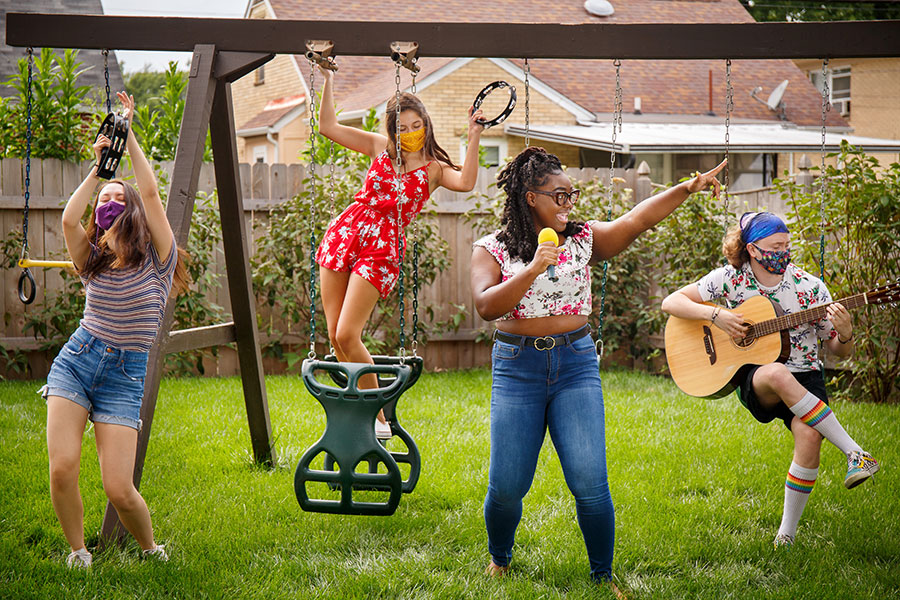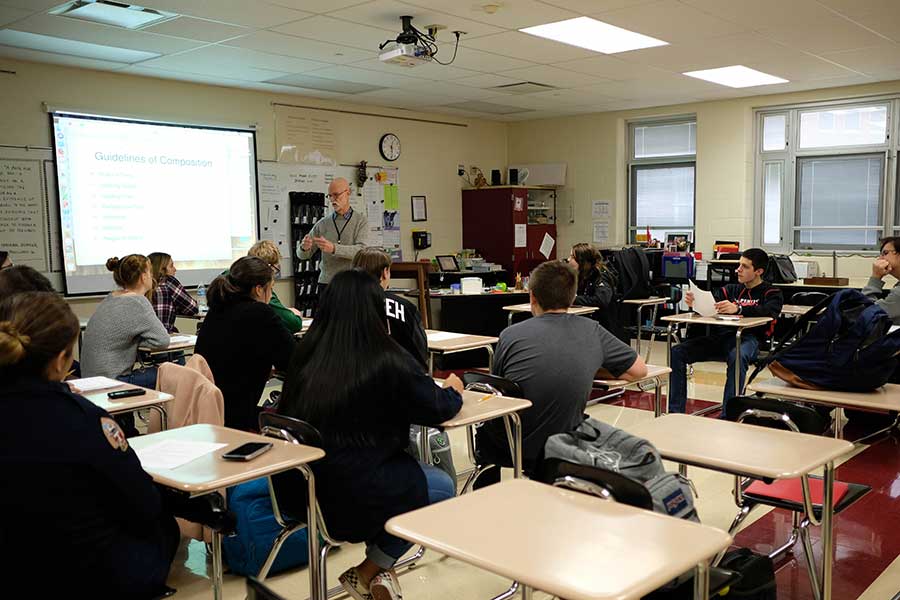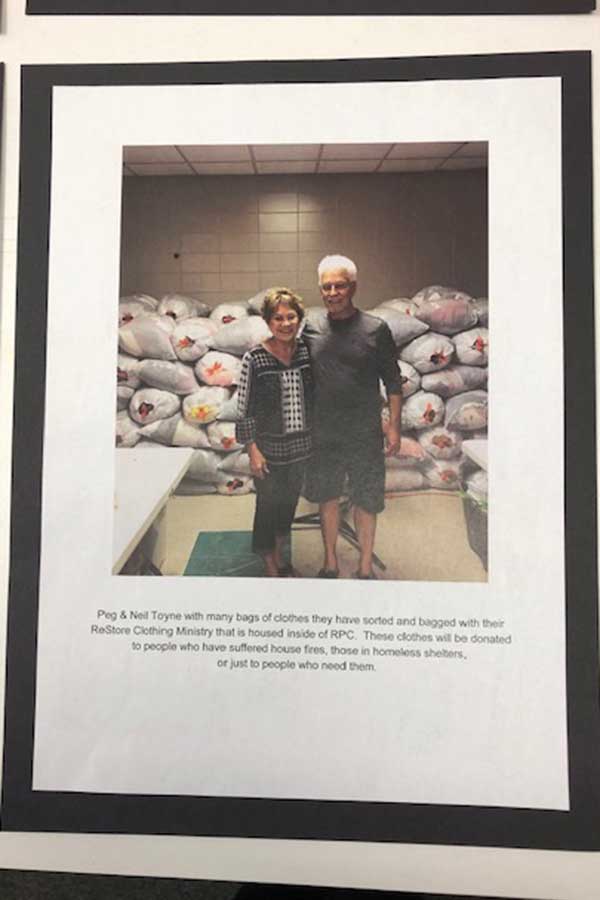Please Note
• It may be convenient to bookmark the Backstage page on your device. Tapping a month’s name on the right will auto-scroll you to that month. You may print this page if you wish.
• If updates are made to this schedule, you will be notified via voice message, the change will initially appear on the top of the Backstage page and the changes will appear in red on this schedule. Currently, notes of interest appear in red.
• Song titles appear in italic type. Required cast appears in (parenthesis).
• “AIS2” means Act One, Scene Two; “AIIS3” means Act Two, Scene Three, and so on.
• We will be “dark” – meaning no rehearsal – on several days throughout the rehearsal period, as well as breaks for Thanksgiving and late December.
• “Tutti” means the entire cast (Italian word meaning “all together”).
• When a specific character is listed, both the principal and understudy actors for that role should attend rehearsal.
• If a day simply indicates “Rehearsal” without specifying a scene or song, this indicates a complete run-through of the show (these begin in December).
• For speaking characters, be very familiar with your scene the first time it is rehearsed. The second time any scene appears on the schedule, you should be essentially off-book (memorized) for that scene.
• In this show, Encore is the production number that will occur following the curtain call and features the entire cast.
October
SUN, OCT 31
1:00-5:00
Dance and Vocal Rehearsal
(Tutti)
“Tutti” = entire cast.
Happy Halloween!
November
MON, NOV 1
4:30-6:00
AIS3, pgs 17-20, Pulled
(Wednesday, Pugsley)
6:00-8:30
AIS2, pgs 15-16, Trapped
(Gomez)
TUES, NOV 2
4:30-6:00
AIS1, pgs 6-7, incl Fester’s Manifesto
(Fester, Wednesday, Lucas, When You’re An Addams – Group A Ancestors)
Selected Ancestors specifically have When You’re An Addams – Group A on their notification letters. It is the “Group A” performers who should attend this rehearsal.
6:00-8:30
AIS3, pgs 20-25, beginning of One Normal Night
(Morticia, Gomez, Wednesday, Pugsley, Grandma, Fester, Lurch)
WED, NOV 3
4:30-7:00
AIS4, pgs 28-30, incl One Normal Night (Fester’s section)
(Fester, Ancestors)
7:00-8:30
AIS4, pgs 30-31, incl One Normal Night (final section)
(Tutti)
7:00-7:30
(Pugsley vocal session)
7:30-8:30
(Gomez & Morticia vocal session)
THURS, NOV 4
4:30-7:00
AIS8, pgs 48-49 Morticia and Alice look at photos
(Morticia, Alice)
5:30-7:00
AIS8, pgs 48-49 Morticia and Alice look at photos
(Morticia, Alice, Secrets Ancestors)
Selected Ancestors specifically have Secrets on their notification letters. It is those performers who should attend this rehearsal.
7:00-8:30
AIS9, pgs 53-56, incl Gomez’s What If
(Gomez, Lucas, Wednesday, Morticia)
FRI, NOV 5
4:30-6:30
AIS10, pgs 57-62, incl Pugsley’s What If
(Wednesday, Lucas, Pugsley, Grandma)
6:30-7:00
(Wednesday vocal session)
7:00-7:30
(Morticia vocal session)
7:30-8:00
(Gomez vocal session)
8:00-8:30
(Fester vocal session)
SAT, NOV 6
9:00-11:00
Selected Wednesday & Lucas scenes:
AIS6 pgs 43-44
AIIS1, pgs 76-78
AIIS6, pgs 92-93
AIS10, pgs 57-58
(Wednesday, Lucas, Pugsley, Gomez, Just Around The Corner Ancestors)
Selected Ancestors specifically have Just Around The Corner on their notification letters. It is those performers who should attend this rehearsal.
11:00-2:00
AIS12, pgs 63-75, incl Full Disclosure (we will not rehearse the song Waiting this day)
(Gomez, Morticia, Wednesday, Pugsley, Fester, Grandma, Lurch, Lucas, Mal, Alice)
Although the Ancestors are in Full Disclosure, they will not attend this rehearsal.
SUN, NOV 7
Remember to set any non automated clocks back this morning!
1:00-2:30
AIS3&4, pgs 24-31, One Normal Night
(Tutti)
2:30-5:00
AIS5, pgs 33-41, the Beineke family meets the Addams family
(Lurch, Lucas, Mal, Alice, Gomez, Morticia, Wednesday, Pugsley, Grandma, Fester)
MON, NOV 8
4:30-6:00
AIS12, pgs 65-75, Full Disclosure vocal rehearsal
(Tutti except Lurch)
6:00-7:30
AIS7, pgs 45-47, the Heretic’s Chair
(Gomez, Mal)
TUES, NOV 9
4:30-6:30
AIIS5, pgs 88-91, incl Happy Sad
(Gomez, Wednesday)
6:30-8:30
AIIS8, pgs 103-105, incl Not Today
(Gomez, Lurch, Fester)
This 6:30-8:30 rehearsal was previously scheduled for Nov 11 at 6pm
WED, NOV 10
4:30-6:30
AIS12, pgs 65-75, Full Disclosure staging rehearsal
(Tutti)
6:30-8:30
AIS1, pgs 1-4, incl beginning of When You’re An Addams, prior to the arrival of the Ancestors
(Gomez, Morticia, Wednesday, Pugsley, Fester, Grandma, Lurch)
THURS, NOV 11
4:30-6:00
AIIS10, pgs 111-118, incl Move Toward The Darkness
(Gomez, Morticia, Wednesday, Pugsley, Fester, Grandma, Lurch, Lucas, Mal, Alice)
Although the Ancestors are in Move Toward The Darkness, they will not attend this rehearsal.
6:00-8:30
AIIS9, pgs 106-110, incl Let’s Live Before We Die
(Gomez, Morticia)
This 6:00-8:30 rehearsal was previously scheduled for Nov 9 at 6:30pm
FRI, NOV 12
At this rehearsal, if it is convenient to arrive a bit early (to come directly from school, etc.), we need to take each student’s photo for the building security system and any early arrivals will help that to occur more smoothly. Thanks!
4:30-7:30
AIIS10, pgs 111-118, incl Move Toward The Darkness
(Tutti)
7:30-8:30
AIIS7, pgs 101-102, Pugsley’s bedtime story
(Morticia, Pugsley)
SAT, NOV 13
This afternoon is the Advance Ticket Sale for families of cast, orchestra and PAs. Details can be found on musemachine.com/backstage
10:00-noon
Vocal rehearsal
(Tutti minus Lurch)
SUN, NOV 14
1:00-2:00
Vocal rehearsal
The Moon And Me, Secrets
(Selected Ancestors specifically have The Moon And Me and/or Secrets on their notification letters. It is those performers who should attend this rehearsal, as well as Fester)
2:00-2:30
Secrets, Live Before We Die
(Morticia & Gomez)
2:30-3:30
Wednesday’s Growing Up, Trapped, Not Today, Happy Sad, What If
(Gomez)
MON, NOV 15
Dark
In theatre, “dark” means no rehearsal or performance.
TUES, NOV 16
4:30-5:30
Vocal rehearsal
Just Around The Corner, But Love
(Selected Ancestors specifically have Just Around The Corner on their notification letters. It is those performers who should attend this rehearsal, as well as Morticia and Fester)
5:30-6:00
What If
(Pugsley)
6:00-6:30
The Moon And Me, Fester’s Manifesto
(Fester)
6:30-7:00
Waiting
(Alice)
7:00-7:45
Crazier Than You
(Wednesday, Lucas, Mal, Alice)
WED, NOV 17
4:30-8:30
AIIS9&10, pgs 109-111, Tango De Amor
(Gomez & Morticia)
6:30-8:30
AIIS9&10, pgs 109-111, Tango De Amor
(Gomez & Morticia, Tango De Amor – Group A Ancestors)
Selected Ancestors specifically have Tango De Amor – Group A on their notification letters. It is the “Group A” performers who should attend this rehearsal.
THURS, NOV 18
4:30-8:30
AIIS9&10, pgs 109-111, Tango De Amor
(Gomez & Morticia, Ancestors)
This evening’s rehearsal includes all Ancestors.
FRI, NOV 19
4:30-8:30
AIS8, pgs 50-52
(Morticia, Alice, Secrets Ancestors)
Selected Ancestors specifically have Secrets on their notification letters. It is those performers who should attend this rehearsal.
SAT, NOV 20
10:00-2:00
A1S1, pgs 4-6, When You’re An Addams
(Gomez, Morticia, Wednesday, Pugsley, Fester, Grandma, Lurch, When You’re An Addams – Group A Ancestors)
If your casting letter specifically lists When You’re An Addams – Group A, please attend from 10-2.
Noon-2:00
A1S1, pgs 4-6, When You’re An Addams
(Add remaining Ancestors)
If your casting letter does not specifically indicate Group A for When You’re An Addams, please attend from noon-2.
SUN, NOV 21
Noon-5:00
A1S1, pgs 4-6, When You’re An Addams
(Gomez, Morticia, Wednesday, Pugsley, Fester, Grandma, Lurch, Ancestors)
MON, NOV 22
4:30-8:30
AIIS2, pgs 80-83, Just Around The Corner
(Morticia, Just Around The Corner Ancestors)
Selected Ancestors specifically have Just Around The Corner on their notification letters. It is those performers who should attend this rehearsal.
TUES, NOV 23
4:30-8:30
Review When You’re An Addams, Secrets, Just Around The Corner, Tango
(Gomez, Morticia, Wednesday, Pugsley, Fester, Grandma, Lurch, Alice, Ancestors)
NOV 24–28
Thanksgiving Break
Happy Thanksgiving!
Happy birthday, Joe Deer! (Nov 25)
Happy Hanukkah! (begins Nov 26)
MON, NOV 29
4:30-8:30
AIS6, pg 44, But Love dance break
(Fester, But Love Ancestors)
Selected Ancestors specifically have But Love on their notification letters. It is those performers who should attend this rehearsal.
TUES, NOV 30
4:30-7:00 (this rehearsal now ends at 7pm)
AIS6, pg 44, But Love dance break
(Fester, But Love Ancestors)
Selected Ancestors specifically have But Love on their notification letters. It is those performers who should attend this rehearsal.
December
WED, DEC 1
4:30-8:30
Act One
(Tutti)
THURS, DEC 2
4:30-8:30
Act Two
(Tutti)
Happy birthday, Jacob McGlaun!
FRI, DEC 3
4:30-7:30
Review production numbers
(Tutti)
7:30-8:30
The Moon And Me
(The Moon And Me Ancestors)
SAT, DEC 4
9:00-2:00
Rehearsal
(Tutti)
SUN, DEC 5
Noon-3:00
Rehearsal includes end of Full Disclosure and end of One Normal Night
(Tutti)
3:00-4:30
AIS2
(Gomez, Lurch, Morticia, Wednesday)
4:30-5:00
AIIS2
(Gomez, Morticia)
MON, DEC 6
4:30-8:30
AIIS6, pgs 92-100, incl Crazier Than You; also AIIS3
(Wednesday, Lucas, Fester, Mal, Alice)
TUES, DEC 7
4:30-6:00
Selected scenes and songs
(Gomez)
WED, DEC 8
4:30-8:30
Rehearsal includes Wedding Sequence from the curtain call – pg 119; Move Toward The Darkness – pgs 114-118; and vocal rehearsal
(Tutti)
THURS, DEC 9
4:30-8:30
Principal Character Rehearsal
(Gomez, Morticia, Wednesday, Pugsley, Fester, Grandma, Lurch, Lucas, Alice, Mal)
4:30-6:00
The Moon And Me
(Fester, The Moon And Me Ancestors)
FRI, DEC 10
Dark
SAT, DEC 11
10:00-2:00
Rehearsal – Act One
(Tutti)
SUN, DEC 12
Noon-5:00
Rehearsal – Act Two
(Tutti)
MON, DEC 13
4:30-8:30
Rehearsal
(Tutti)
TUES, DEC 14
4:30-8:30
Rehearsal – Act One
(Tutti)
WED, DEC 15
4:30-8:30
Rehearsal – Act Two
(Tutti)
THURS, DEC 16
4:30-8:30
Rehearsal
(Tutti)
FRI, DEC 17
Dark
SAT, DEC 18
10:00
Orchestra & PAs arrive and set-up
10:30-2:30
Sitzprobe
(Tutti cast + orchestra)
The Sitzprobe is a concert version of the musical numbers from the show combining the cast and orchestra.
SUN, DEC 19
Noon-5:00
Rehearsal with Orchestra
(Tutti)
MON, DEC 20
4:30-8:30
Rehearsal
(Tutti)
TUES, DEC 21
4:30-8:30
Rehearsal
(Tutti)
DEC 22—Jan 2
Winter Break
Merry Christmas!
Happy Kwanza!
Happy New Year!
January
Our three January rehearsals are all in the Muse studio, with the entire cast and all PAs. We will rehearse and record the show to expedite rehearsals in the spring
MON, JAN 3
4:30-8:30
Rehearsal
(Tutti)
TUES, JAN 4
4:30-8:30
Rehearsal
(Tutti)
WED, JAN 5
4:30-8:30
Rehearsal
(Tutti)
June
Currently, the spring rehearsal schedule is TENTATIVE. For planning purposes, let us assume that we may begin rehearsals on May 28 and rehearse daily through the performances. June 15, 16, 17 and 18 are likely to be long days, each containing two rehearsals, two performances or a combination of both.
FRI, JUNE 17
Performance (Opening Night)
7:00: Call
8:00: Curtain
11:30: Students released (approx)
SAT, JUNE 18
Performances
2:00: Call
3:00: Curtain
*Dinner provided between performances
7:00: Call
8:00: Curtain
11:30: Students released (approx)
SUN, JUNE 19
Performance (Closing Performance)
1:00: Call
2:00: Curtain
5:30: Students released (approx)




